可调速工业电机驱动器有哪些不同类型
投稿人:DigiKey 北美编辑
2024-07-26
国际电工委员会 (IEC) 标准 61800 将用于工业应用的可调速电力驱动系统 (PDS) 分为两类。61800-1 适用于直流 (DC) PDS,61800-2 适用于交流 (AC) PDS。PDS 一词适用于由驱动器和电机构成的完整系统。
61800 的其他部分讨论了测试方法、与热条件和能量条件相关的安全要求、功能安全、编码器的电气和环境要求、电气接口和性能测量。最新部分 IEC 61800-9 涉及电机系统的生态设计,包括能效确定和分类。
虽然 IEC 61800 对可调速交流和直流 PDS 进行了定义,但工业应用中的变速驱动器 (VSD) 和变频驱动器 (VFD) 也有通用定义。IEC 61800 适用于连接至最大 1.5 kVAC 50 Hz 或 60 Hz 电源的市电供电型 PDS。其还规定了电池供电型系统的直流输入电压,例如使用可调速驱动器的工业自主移动机器人 (AMR)。IEC 61800 不涉及牵引和电动汽车驱动器。
本文简要介绍了 VSD 和 VFD 的常用定义,并探讨了广泛使用 VFD 的原因。然后,回顾了 IEC 61800-9 中为交流驱动器定义的效率等级,并介绍了 Delta Electronics、Siemens、Schneider Electric 和 Omron Automation 提供的典型市电供电型 VFD,最后还以 MEAN WELL 的示例系统为例,探讨了 VFD 在 AMR 和其他电池供电型系统中的应用。
VFD 的标准定义是,利用频率变化控制电机速度的驱动器,因此适用于交流电机。而 VSD 通过改变电压来控制电机,因此既适用于交流电机,也适用于直流电机。
驱动器并非如此简单。这两类驱动器都可用于控制电机速度。因此,有时术语 VSD 亦适用于 VFD。VFD 可用于无刷直流电机 (BLDC);严格来说,VFD 并不局限于交流电机。VFD 适用于各种电机,例如:
- 感应电机 (IM) 或异步交流电机,这些电机具有自启动、可靠和经济实惠的特点,因此广泛应用于工业领域。
- 永磁同步电机 (PMSM),这是一种高效交流电机,可在要求高能效的高性能应用中实现精确的扭矩和速度控制。
- 无刷直流电机 (BLDC),其也可用于具有高效和精确控制要求的应用中,通常工作寿命较长。
- 伺服电机,可以是交流或直流电机,支持快速、高精度响应。具有专用控制算法的 VFD 可用于机器人中的伺服电机、计算机数控 (CNC) 车床和类似应用。
- 同步交流电机 (SM),适用于要求恒定速度和精确同步的应用。虽然 VFD 可以控制 SM 的速度,但其他(成本较低)的驱动器也能够支持恒速运行。
VFD 采用多种控制算法,使其用途更加广泛。例如,仅仅对于感应电机而言,就有四种主要 VFD 控制算法:每赫兹伏特 (V/f)、带编码器的 V/f、开环矢量和闭环矢量。这些算法都采用脉冲宽度调制,可对速度和扭矩进行不同程度的控制。
IEC 61800-9 标准的编制证实了 VFD 在各种工业应用中的重要性,其重点介绍 VFD 和相关电机驱动系统的效率和生态设计。
BDM、CDM 和 PDS
IEC 61800-9 标准有两个部分与 VFD 有关。第 1 部分阐述了确定应用的能效指数或参考值的方法。第 2 部分通过一系列分类详细介绍了效率评估方法。
虽然 VFD(在 IEC 61800-9 中称为基本驱动模块 [BDM])的效率非常重要,但这并不是该标准的主要关注点。该标准的适用范围更广,包括由频率逆变器 (VFD)、反馈部分、输入和输出辅助设备(如滤波器和扼流圈)组成的完整驱动模块 (CDM) 以及由 CDM 和电机组成的电力驱动系统 (PDS)(图 1)。
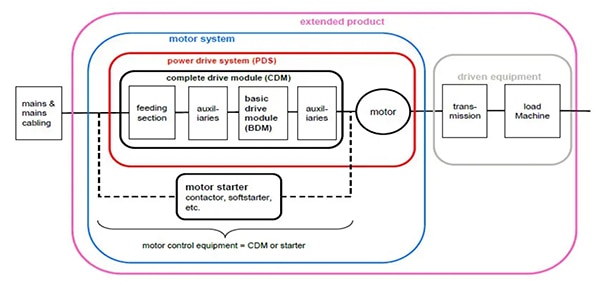 图 1:IEC 61800-9 效率等级适用于 VFD 系统中的 CDM(黑色部分)和 PDS(红色部分)。(图片来源:Schneider Electric)
图 1:IEC 61800-9 效率等级适用于 VFD 系统中的 CDM(黑色部分)和 PDS(红色部分)。(图片来源:Schneider Electric)
CDM 效率等级
CDM 国际效率 (IE) 等级定义为 IE0 至 IE2。效率等级是通过比较 CDM 的总损耗与参考 CDM (RCDM) 的性能而确定的。CDM 的 IE 等级是相对于 (90, 100) 工作点定义的,使用 90% 的电机定子频率和 100% 的转矩电流,以避免过调并确保不同制造商的驱动器性能测量结果具有可比性。
RCDM 的性能定义为 IE1。如果 CDM 的损耗比 RCDM 低 25% 以上,则归类为 IE2;如果 CDM 的损耗比 RCDM 高 25%以上,则归类为 IE0。RCDM 还可以在八个预定义的工作点 (0, 25)、(0, 50)、(0, 100)、(50, 25)、(50, 50)、(50, 100)、(90, 50) 和 (90, 100),将能耗与采用平均技术的 CDM 进行比较(图 2)。
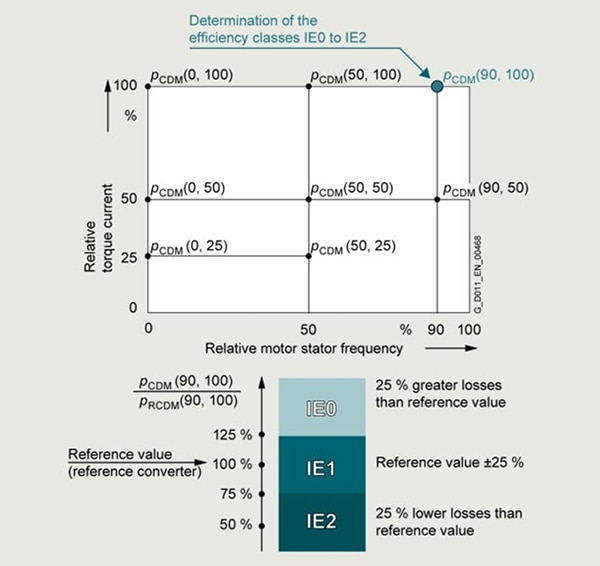 图 2:IEC 61800-9 CDM 工作点和效率等级。(图片来源:Siemens)
图 2:IEC 61800-9 CDM 工作点和效率等级。(图片来源:Siemens)
PDS 效率等级
PDS 国际效率系统 (IES) 等级与 CDM IE 等级类似,定义为 IES0 至 IES2。这些等级以参考 PDS (RPDS) 为基础,显示完整驱动模块和电机的效率。
根据具体应用要求匹配电机和 CDM 组合,为整体效率优化提供了更大的潜力。这种效率优化体现在更高的 IES 等级上。与 RCDM 一样,RPDS 也可以在八个预定义的工作点将能耗与采用平均技术的 PDS 进行比较。
工作点基于扭矩百分比和速度百分比,IES 值则基于 100% 扭矩和 100% 速度,即 (100, 100) 工作点,进行计算。
IES 等级未采用 IE 等级的 25% 变化率,而是采用 20% 变化率。效率等级为 IES2 的 PDS 的损耗比定义为 IES1 的 RPDS 低 20% 以上,而等级为 IES0 的 PDS 的损耗比定义为 IES1 的 RPDS 高 20% 以上(图 3)。
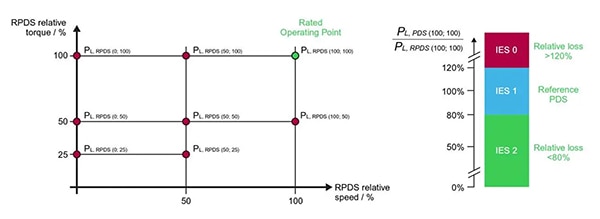 图 3:IEC 61800-9 PDS 工作点和效率等级。(图片来源:Schneider Electric)
图 3:IEC 61800-9 PDS 工作点和效率等级。(图片来源:Schneider Electric)
VFD 示例
VFD 制造商并不总是根据 61800-9 标准报告效率。这是因为 IEC 61800-9 中采用的最简单效率测量适用于 CDM,而 CDM 由 VFD(频率逆变器)和许多其他组件组成,包括馈送部分和输入输出辅助设备。其他特定组件的使用超出了 VFD 制造商的控制范围,而且 61800-9 标准并不直接适用于 VFD。
一些 VFD 制造商对 61800-9 方法进行了调整。当要求符合 IE2 等级时,数据会以各种格式公布,包括图表、表格和 Excel 文件。
例如,Siemens 在其 SINAMICS V20 驱动器中采用了 IEC 61800-9 方法,并报告这些驱动器达到效率等级 IE2(图 4)。这些驱动器有九种框架尺寸,功率从 0.16 到 40 马力 (hp) 不等。这些驱动器针对制造和加工应用中的基本驱动系统(如泵、风扇、压缩机和传送带)进行了优化。有很多可选组件,包括输入滤波器、输入和输出电抗器、制动电阻器等。
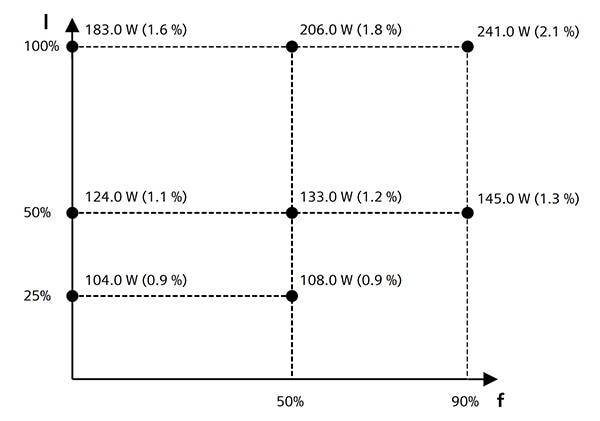 图 4:效率等级为 IE2 的 7.5 kW CDM,其损耗比参考转换器低 36.1% (90% / 100%)。百分比显示了损耗与基本驱动器(不含可选组件)的额定功率的关系。(图片来源:Siemens)
图 4:效率等级为 IE2 的 7.5 kW CDM,其损耗比参考转换器低 36.1% (90% / 100%)。百分比显示了损耗与基本驱动器(不含可选组件)的额定功率的关系。(图片来源:Siemens)
Delta Electronics 也对 61800-9 方法进行了调整,并报告其 1.7、3.0、4.2、6.6、9.9 和 12.2 kVA MS300 系列紧凑型驱动器达到 IE2 效率等级。数据以表格而非图表的形式详细列出。MS300 系列包括功率从 0.2 至 22 kW 的驱动器(图 5)。这些驱动器具有多项内置功能,包括用于编程的可编程逻辑控制器 (PLC) 功能、MODBUS 通信、可支持其他协议的通信插槽以及用于上传和下载数据的 USB 端口。
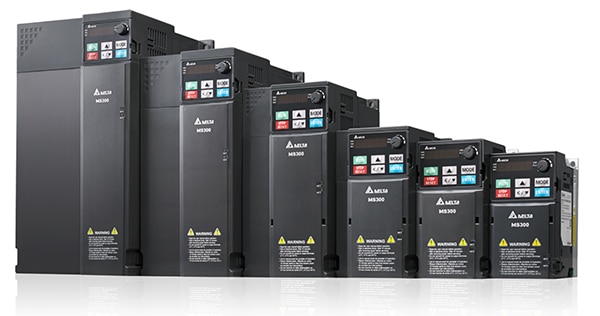 图 5:Delta Electronics 的 MS300 系列包括功率从 0.2 至 22 kW 的驱动器。(图片来源:Delta Electronics)
图 5:Delta Electronics 的 MS300 系列包括功率从 0.2 至 22 kW 的驱动器。(图片来源:Delta Electronics)
Omron 报告称,其“三相输入变速驱动器”(如 MX2 系列 VFD)符合 IE2 效率要求。该公司提供 Excel 文件格式的测试数据。对于 200 V 单相输入,MX2 驱动器的额定功率范围为 0.1 至 2.2 kW;对于 200 V 三相输入,其额定功率范围为 0.1 至 15.0 kW;对于 400 V 三相输入,额定功率范围为 0.4 至 15.0 kW。这些驱动器专为 IM 和 PM 电机设计,可在 0.5 Hz 频率下以 200% 的启动扭矩平稳控制至零速。
其他 VFD 制造商关注 IEC 61800-9 标准的第 1 和第 2 部分,而 Schneider Electric 则采取了更全面的方法,介绍了如何将其驱动器与适当的电机集成,以满足生态设计指令和 IEC 61800-9 第 3 部分的要求,该部分描述了通过生态平衡实现定量生态设计方法,包含产品类别规范和相关环境声明。
该公司的 Altivar Machine ATV320 驱动器系列包括 IP20 和 IP6x 等级的 VFD,功率范围为 0.18 至 15 kW(0.25 至 20 hp),适用于采用开环控制的三相同步、异步、PM 和 BLDC 电机,并具有以下功能:
- 利用无传感器磁通矢量控制,实现低速时的扭矩和速度精度以及高动态性能
- 支持高频电机
- 符合功能安全标准的集成功能
那么,AMR 呢?
AMR 使用 VFD,但是不同类型的 VFD。MEAN WELL 的 VFD 系列 BLDC 电机驱动器就是一个很好的例子。它们符合 IEC 61800 相关部分的要求,例如 61800-5-1 安全要求和 61800-3 电磁兼容性 (EMC) 要求。不过,这些 VFD 并非成套驱动器,因此 61800-9 的效率类别并不适用。
VFD 系列包括八种型号,有直流和交流输入版本,功率从 150 W 到 750 W 不等。VFD-350P-48 型的输入电压为 48VDC,适用于 AMR 等电池供电型应用,可提供高达 350 W 的功率和 20 A 的输出电流。
这款 350 W BLCD 驱动器封装在 4 "x 2 "电路板上,无风扇设计可支持 5 秒钟的 200% 峰值负载(图 6)。VFD 系列的所有型号都只包括动力驱动器部分,因此需要一个外部控制卡。MEAN WELL 也提供控制卡可供选择。
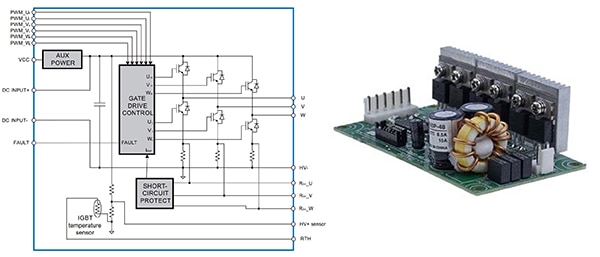 图 6:VFD 驱动器电源部分框图(左)和可直接安装在 AMR 中的电源部分(右)。(图片来源:MEAN WELL)
图 6:VFD 驱动器电源部分框图(左)和可直接安装在 AMR 中的电源部分(右)。(图片来源:MEAN WELL)
结语
各种可调速度驱动器设计可用于工业应用,包括机器控制和 AMR。它们可支持交流和直流电机,并在不同程度上符合 IEC 61800 标准相关部分的规定。此外,由于单个 VFD 的性能并非 IEC 61800-9 标准的重点,因此有几种不同的方法来报告与这些效率标准相关的性能。一些 VFD 制造商关注第 1 和第 2 部分,并报告 VFD 效率等级,如 IE2。相比之下,另一些制造商则注重第 3 部分,该部分涉及整体生态设计考虑因素,包括产品类别规范和相关环境声明。

免责声明:各个作者和/或论坛参与者在本网站发表的观点、看法和意见不代表 DigiKey 的观点、看法和意见,也不代表 DigiKey 官方政策。







 中国
中国